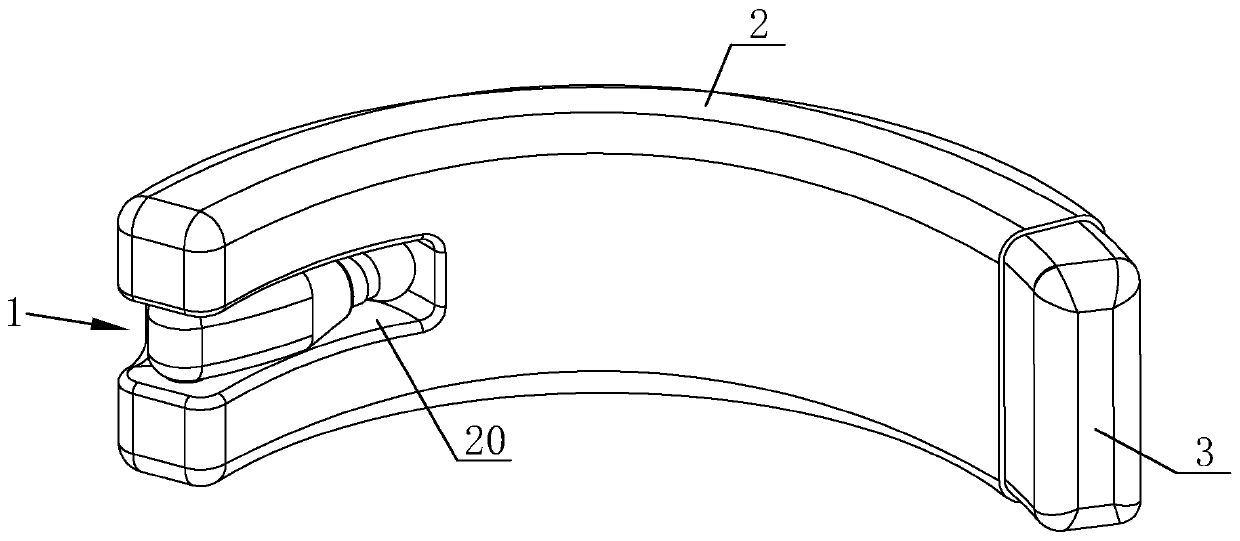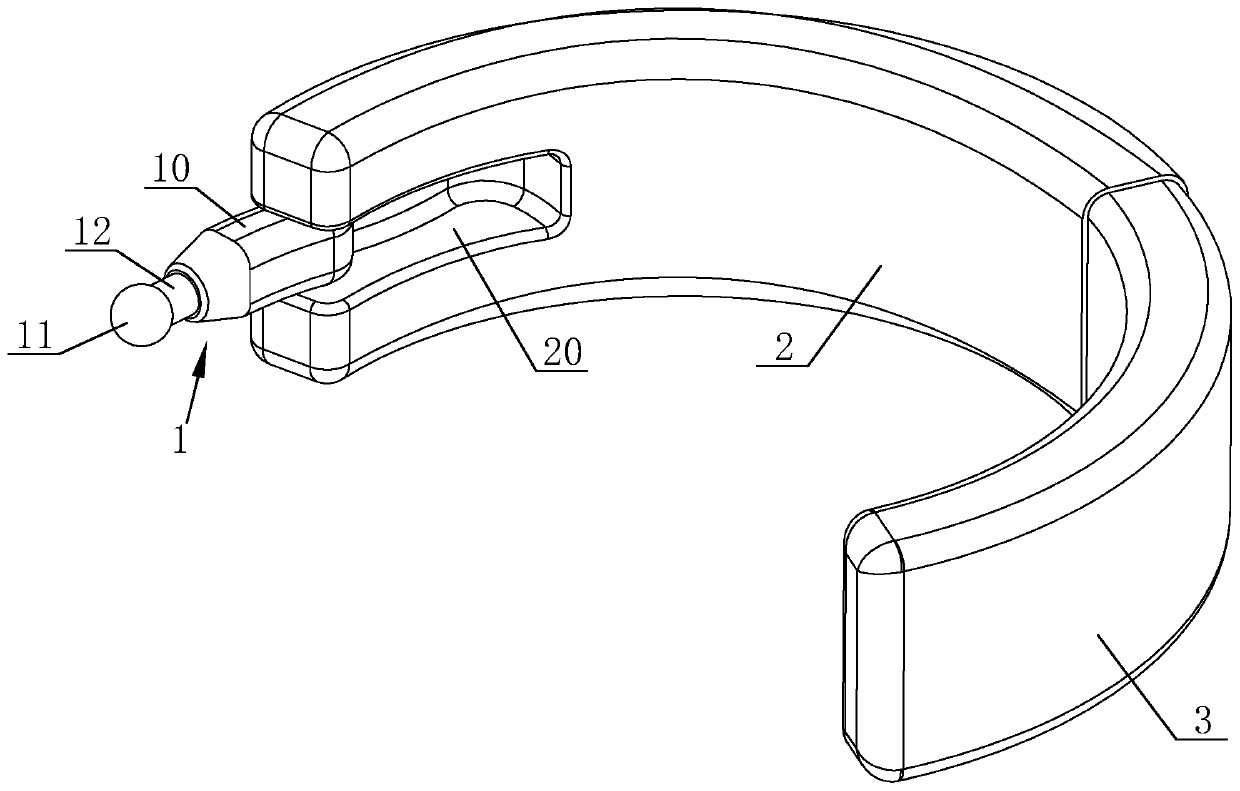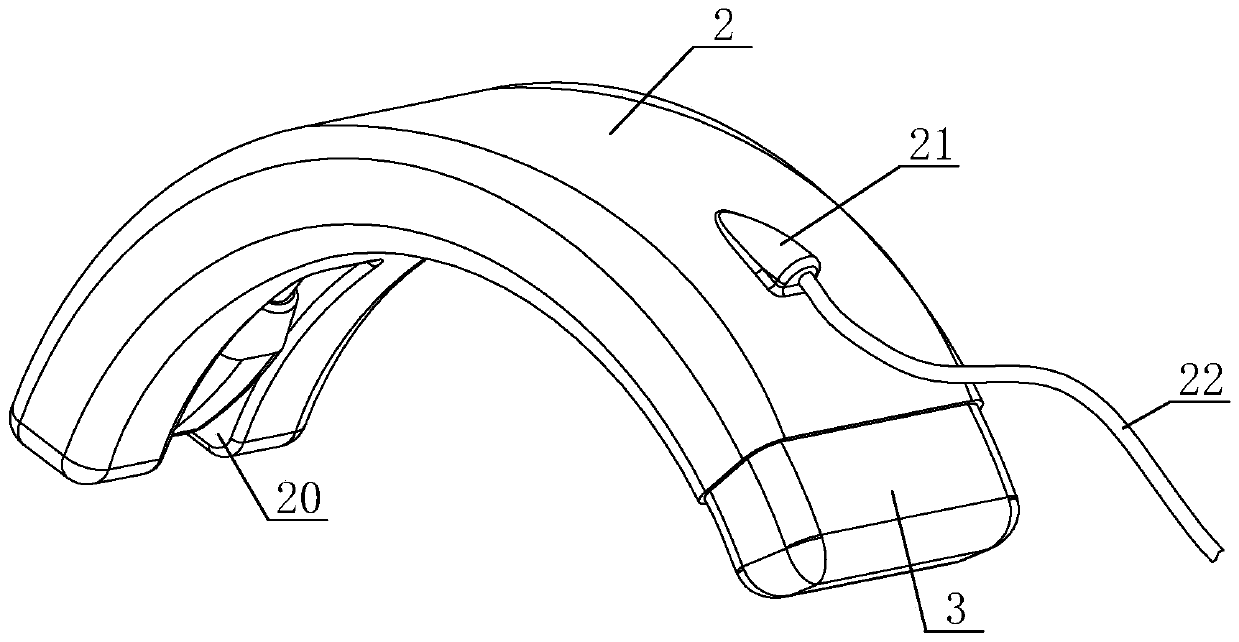Nerve detection device for neck surgery
A detection device and surgical technology, applied in diagnostic recording/measurement, medical science, diagnosis, etc., can solve problems such as displacement, affecting the continuity and safety of surgery, and it is difficult to ensure real-time monitoring of the recurrent laryngeal nerve, so as to save surgery Manpower, the effect of avoiding damage
- Summary
- Abstract
- Description
- Claims
- Application Information
AI Technical Summary
Problems solved by technology
Method used
Image
Examples
Embodiment 1
[0033] figure 1 It is a structural schematic diagram of the nerve detection device for cervical surgery of the present invention, as figure 1 The shown nerve detection device for neck surgery includes a detection head 1 , a clamping member 2 and an extension member 3 . The clip 2 is an arc-shaped strip that can be clipped on the tracheal cartilage ring 5. One end of the clip 2 is provided with a detection head 1 for detecting the recurrent laryngeal nerve 6, and the other end of the clip 2 is provided with a prolonging clip. 2 extensions 3. Wherein, the detection head 1 is rotatably fixed on the clip 2 , and the extension piece 3 is telescopically fixed on the clip 2 .
[0034] figure 1 Both the detection head 1 and the extension piece 3 are shrunk in the clamping member 2, the end of the clamping member 2 provided with the detection head 1 is provided with a slot for accommodating the detection head 1, and the side of the clamping member 2 in contact with the tracheal cart...
Embodiment 2
[0042] The difference between this embodiment and Embodiment 1 is that the slot is a through groove connecting the inner side and the outer side, and the connecting part is a plastically bent bending part 122 .
[0043] Such as Figure 9 and Figure 10 As shown, after the slot is set as a through slot connecting the inner side and the outer side, the detection head 1 can be selectively rotated out from the outer side or the inner side of the fastener 2, which is suitable for different operating environments and patients. The connecting piece is a plastically bent bending piece 122, and the medical staff can bend the bending piece 122 according to the position between the probe 11 and the recurrent laryngeal nerve 6 during the actual operation, and the bent piece deformed after bending Due to its plasticity, 122 can maintain the bent shape, so that the probe 11 can always be in contact with the recurrent laryngeal nerve 6, and the operation is more convenient.
[0044] Wherei...
Embodiment 3
[0046] Such as Figure 11 to Figure 13 As shown, a limit mechanism is provided between the clip 2 and the extension 3 of the nerve detection device for neck surgery, and the limit mechanism is mainly used to limit the relative movement between the clip 2 and the extension 3 .
[0047] Therefore, a limit groove 72 is provided on the outer surface of the extension piece 3, and a limit button 70 is provided on the outer wall surface of the clamping member 2, and the limit tooth 71 is fixed at the bottom of the limit button 70, and the limit button 70 is carried by a limiter through a reset member such as a spring. The position tooth 71 is pressed against the outer surface of the extension piece 3. When the position limit tooth 71 is aligned with the limit groove 72, the position limit tooth 71 can automatically enter into the limit groove 72 to complete the docking, so that the clamping member 2 and the extension piece 3 are relatively tight.
[0048] In this embodiment, the mai...
PUM
 Login to View More
Login to View More Abstract
Description
Claims
Application Information
 Login to View More
Login to View More - R&D
- Intellectual Property
- Life Sciences
- Materials
- Tech Scout
- Unparalleled Data Quality
- Higher Quality Content
- 60% Fewer Hallucinations
Browse by: Latest US Patents, China's latest patents, Technical Efficacy Thesaurus, Application Domain, Technology Topic, Popular Technical Reports.
© 2025 PatSnap. All rights reserved.Legal|Privacy policy|Modern Slavery Act Transparency Statement|Sitemap|About US| Contact US: help@patsnap.com



